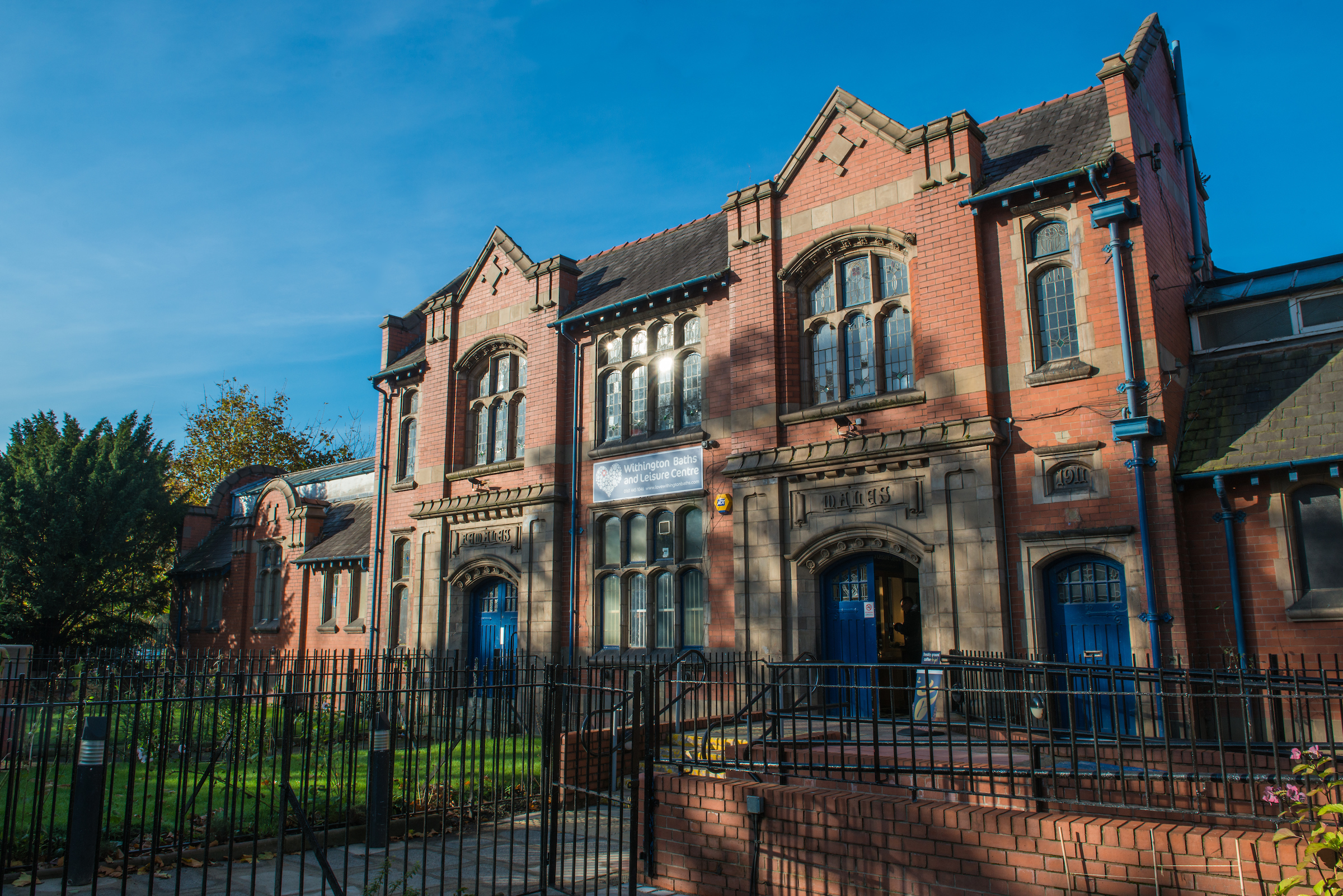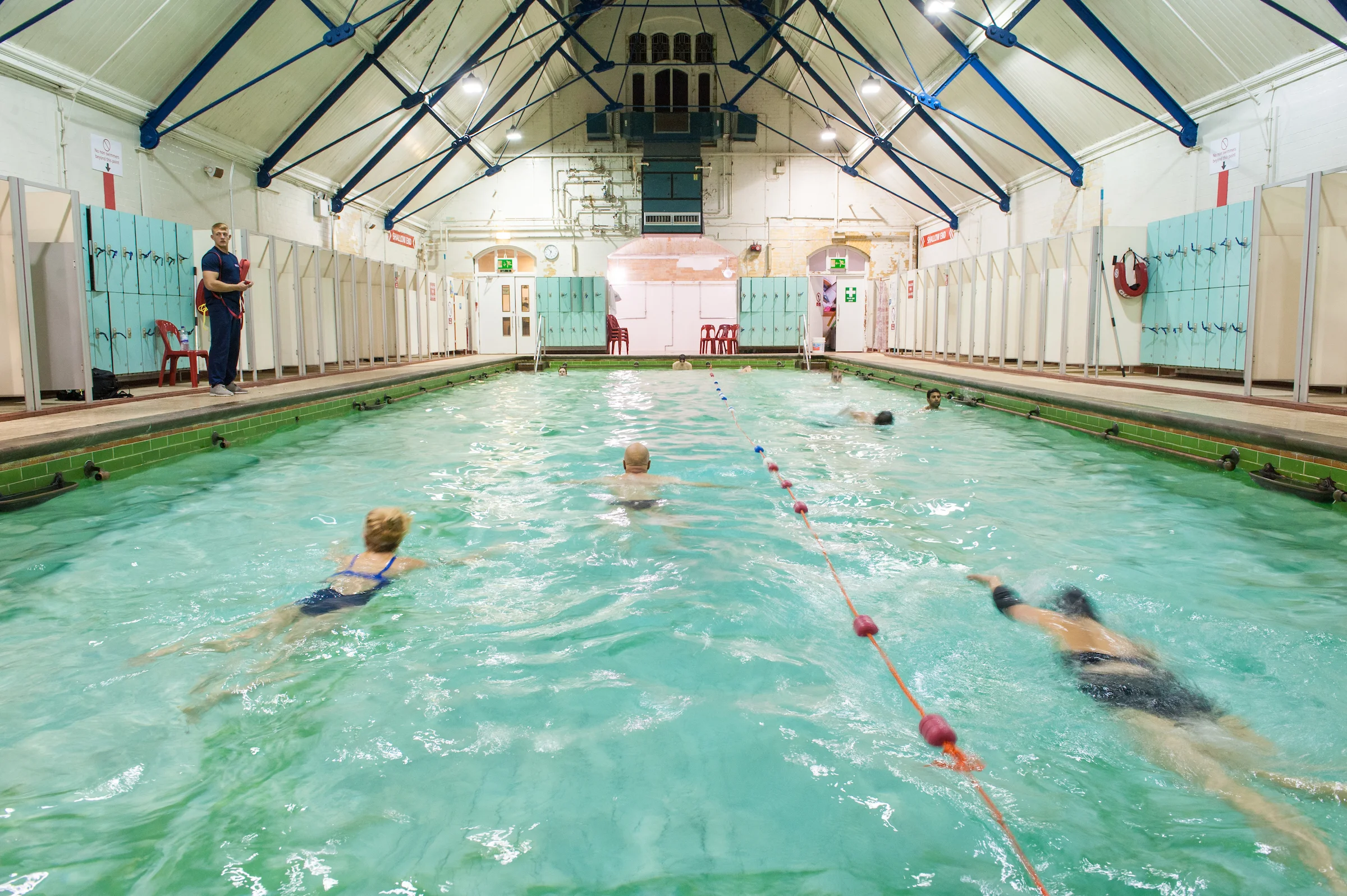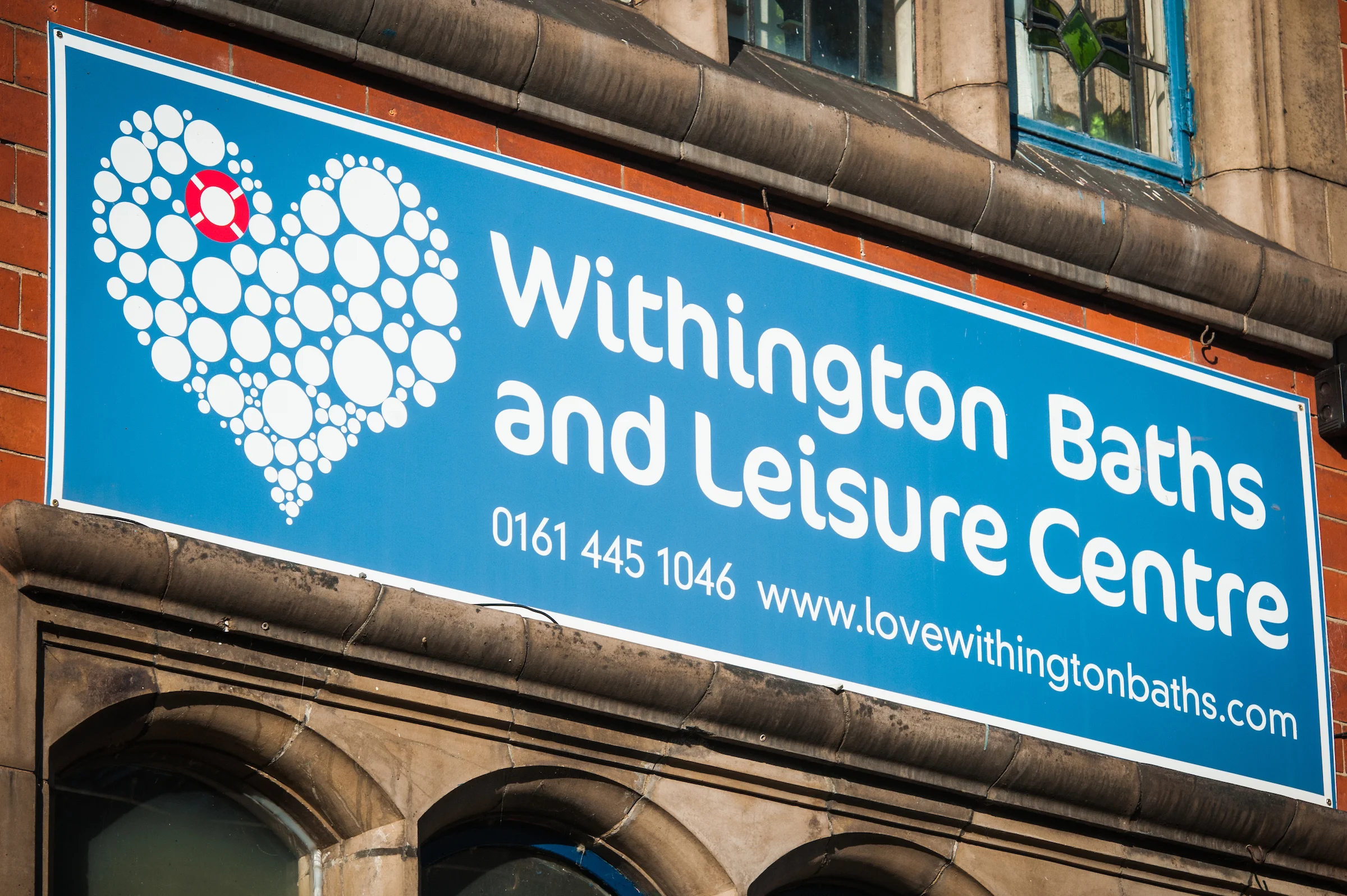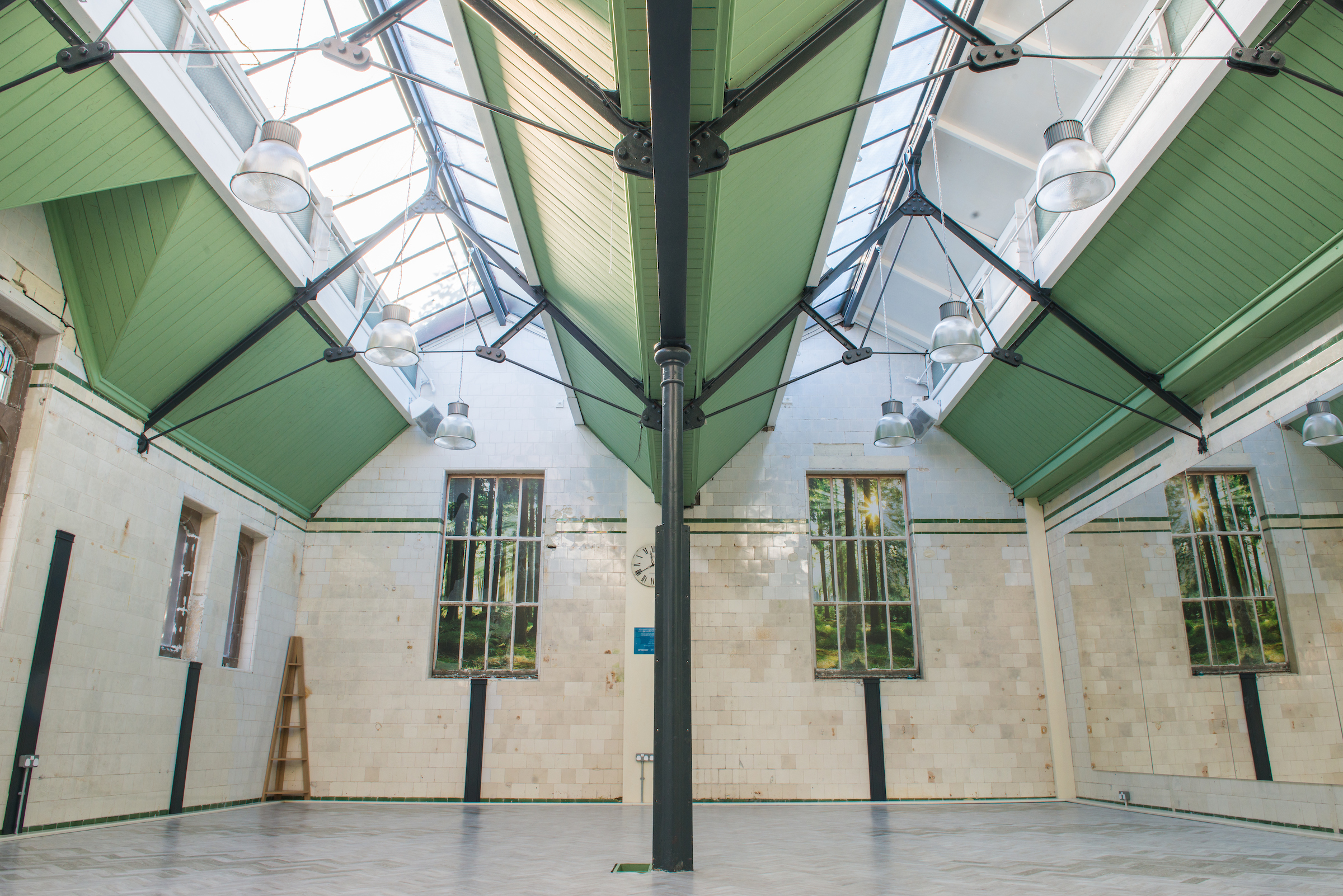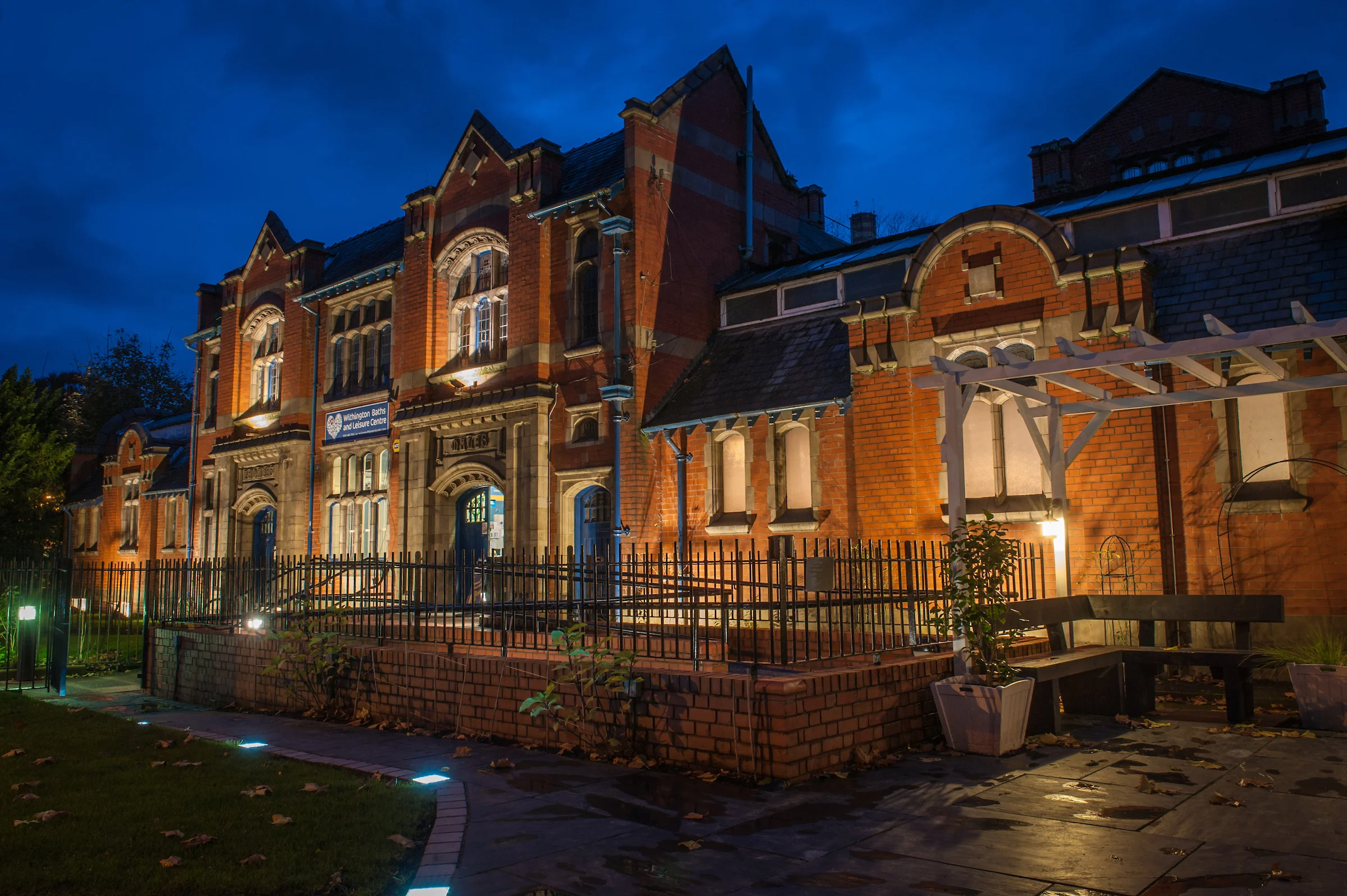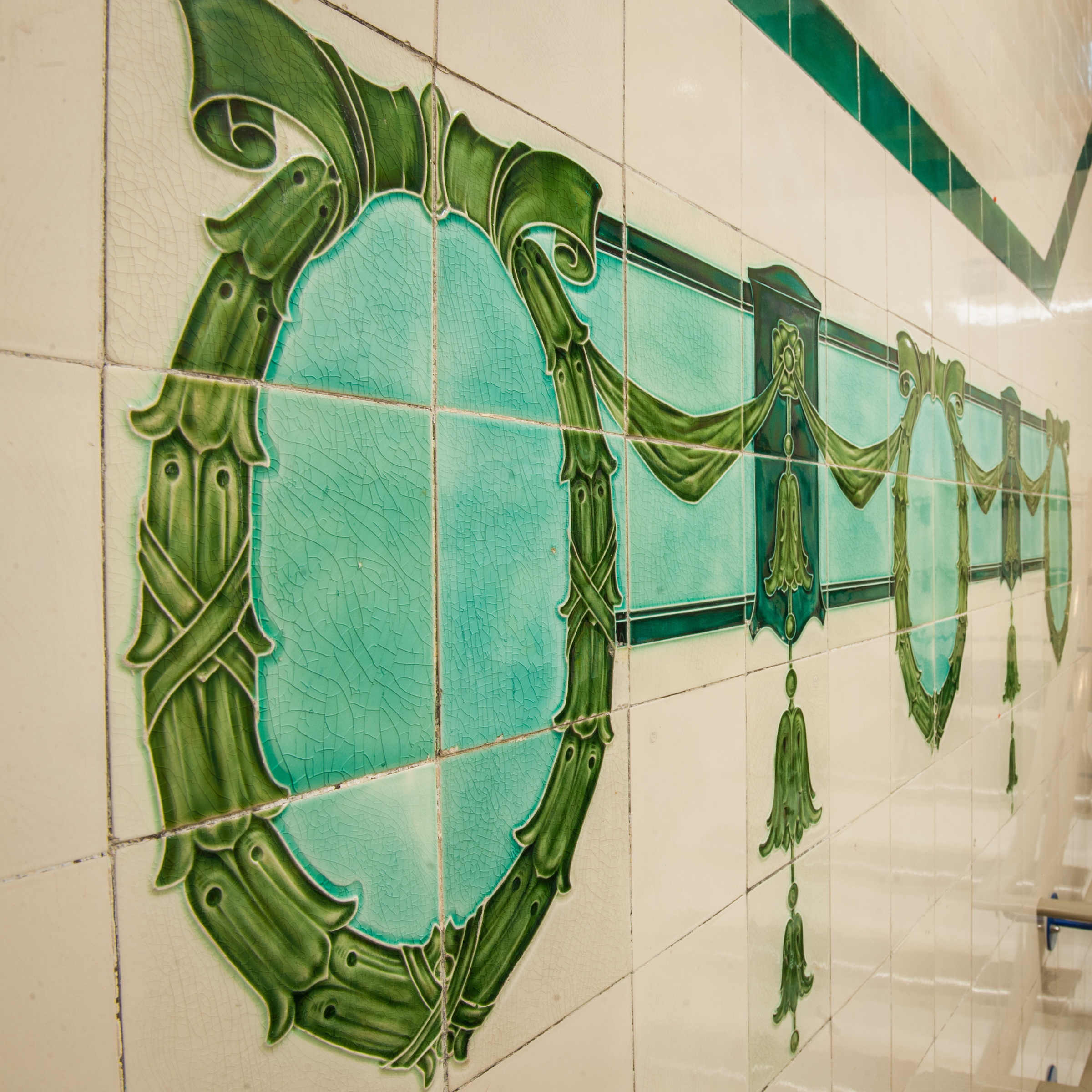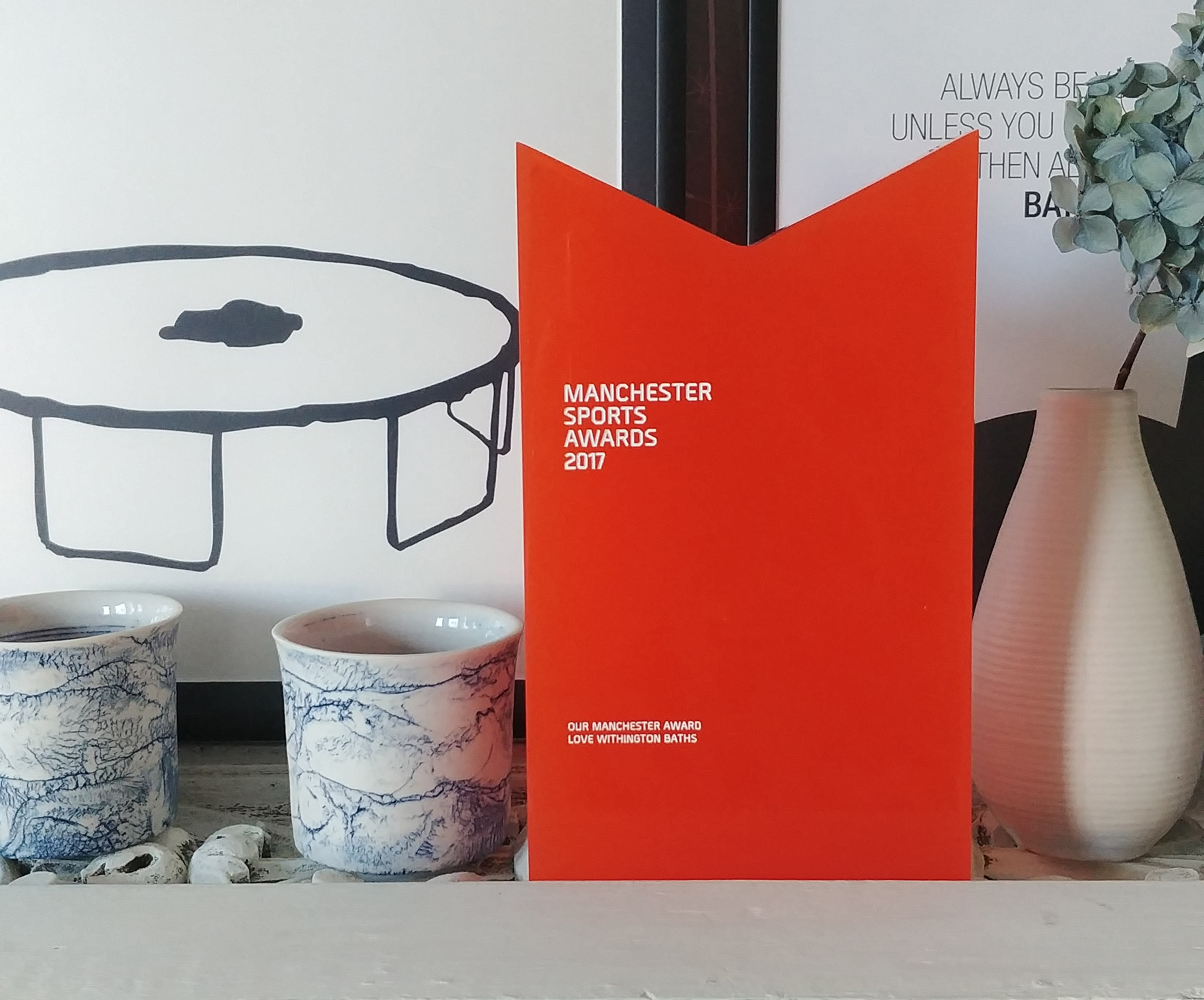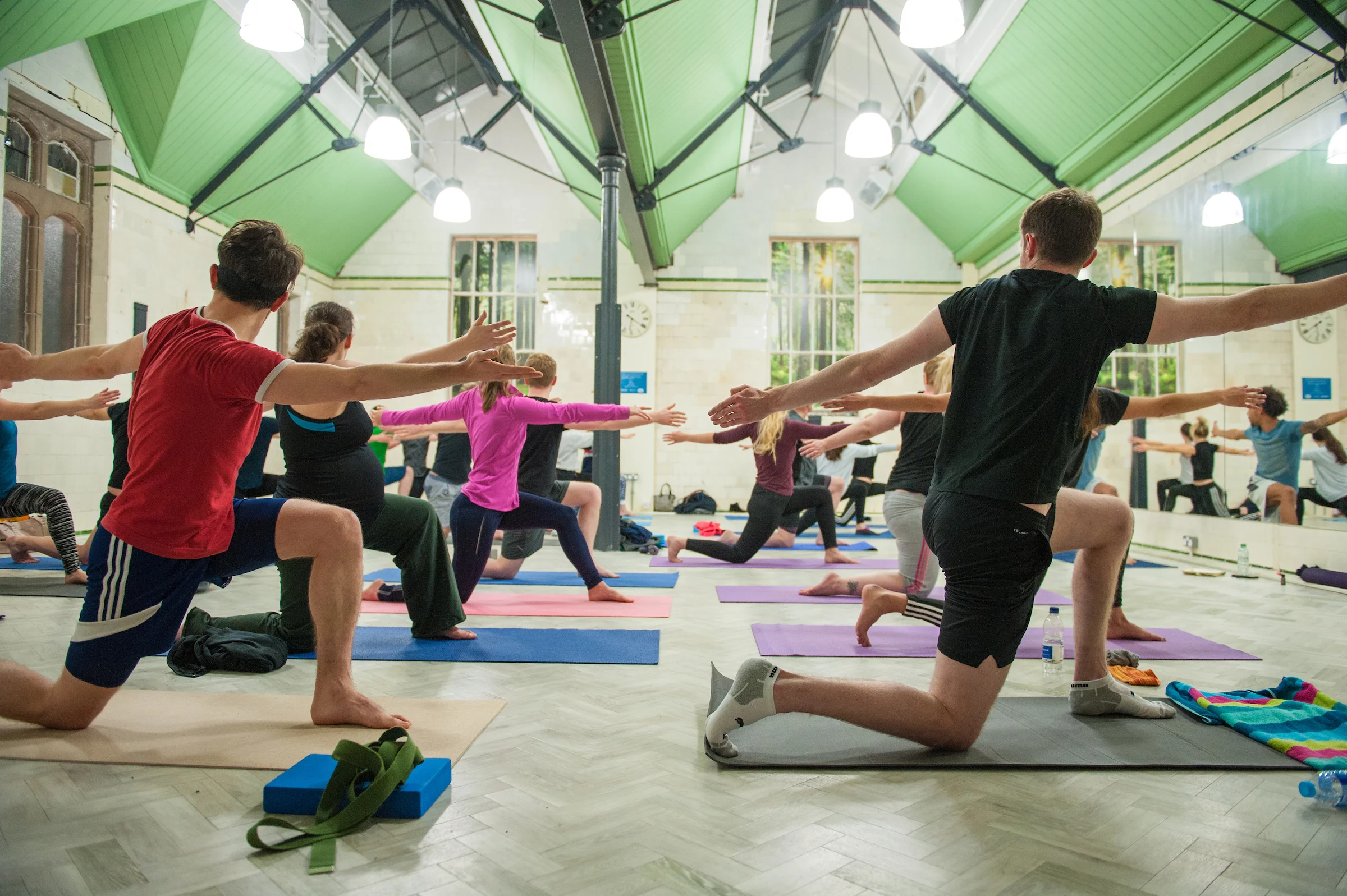All building images taken by Matt Wilkinson. Image of Sport Award taken by me.
Change your community - the story of Withington Baths
It was a hot, close summer night. In a much-loved heritage building in south Manchester housing a 100 year old Edwardian swimming pool, a group of people were on the edge of their seats, intently watching a computer screen. The air was electric. The tension crackled. Wait for it… wait for it… wait for it…
And there it was. The first ever member of Love Withington Baths had flowed through perfectly from our direct debit portal to our leisure management system. The technology was working as planned, and we were ready to open the doors of our new community-run enterprise.
In 2013, Manchester City Council proposed the closure of Withington Baths and Leisure Centre, a beloved and well-used heritage swimming pool and gym in the heart of the community, where generations of local families had learned to swim for more than 100 years. In response, the community mounted a passionate campaign to keep the centre open, and after listening to the voice of the people, the Council agreed.
My role at Love Withington Baths - Director of IT and Governance
As a Board member, I provide the following services:
Director-level strategy and decision-making
Project management
Business strategy definition and associated operational planning and delivery execution
IT design, implementation and ongoing management
Governance design and implementation
Events management
HR and recruitment advisory service
Meeting and workshop facilitation and administration
Implementation and leadership of the LWB Community Advisory Group.
Recent awards received by Love Withington Baths
Buzz Community Champion Award 2018
Manchester Sports Awards 2017: the ‘Our Manchester’ award for the community organisation that most truly embodies the spirit of our proud city.
Sporta ‘Social Enterprise Improvement Award’ 2017.
My role - project managing the service transition and go-live
I became part the Love Withington Baths team in 2015, shortly after the Council gave approval for the centre to remain open (pending formal validation that the LWB community group would be able to meet all the rigorous standards required by the Council in all their leisure service providers).
From that point onwards, we were on a four month countdown until the Council’s current leisure provider would cease to run Withington Baths. Nothing was planned to be handed over – not even the building signage – so we were starting from a position of zero. No members, no gym equipment, no staff. We had to establish the entire business from scratch – hire employees and instructors, write a myriad of policy and procedure documents, hire and install new gym equipment (we also moved the gym to a different room in the Baths in order to free up a second studio), agree our pricing structure, agree our marketing strategy to start generating new memberships as quickly as possible, install IT and financial systems to ensure we could take payments and subsequently manage our members, define and implement appropriate governance, and generally spruce up the building. The Council had given us a very comprehensive checklist of everything that a leisure provider must be able to evidence before the operating licence could be awarded, and the heat was on to make it happen.
The community team that I joined was a very strong one, possessing skills and experience including marketing, PR and social media, building work and renovation, sports funding, legal, town planning and interior design. What was missing was project management – the ability to rapidly bring a disparate team together to focus on delivering a plan to meet specific timescales and business outcomes.
As none of us had ever run a heritage swimming pool before, we needed to bring in leisure expertise as quickly as possible. My first action, therefore, was to define when we needed to have our new Facilities Manager in place. I worked backwards from our ideal opening date, to the role start date, notice period, face to face interviews, shortlisting, and advertising. This forecasting activity identified that we should have begun reviewing CVs the day before, so from this we rapidly prepared and advertised a suitable role description in order to remain on track. As a Project Manager, taking this kind of logical approach is second nature to me, but to my new colleagues, it felt revolutionary, as did the approach that I took to running our weekly meetings, which began with an action review to ensure everyone was doing what they said they were going to do. I also facilitated the meetings as tightly possible in order to keep everyone on track and focused solely on our critical path activities.
My role - IT design, procurement and implementation
In addition to defining and managing the plan, which included everything from human resources and health and safety to the definition of pricing and pool operating procedures, I also took responsibility for designing and implementing the new IT systems. Along with our newly appointed Facilities Manager, we visited a number of other similar sites to review their systems, and from this, defined our core requirements:
Online customer portal where people could sign up for memberships and register to pay by direct debit;
Leisure management system with modules for managing members and scheduling classes;
On-premise card payment system; and
PCs, laptops, network accessed storage, wireless, phones and sound systems.
I contacted a number of potential suppliers to talk through our requirements. The direct debit portal, leisure management system and card payment system had to be sourced from different vendors as a single supplier providing system integration was not available at the time, but they all had to be compatible with each other. After a comprehensive requirements analysis and cost review, we selected three vendors based on best functional requirements match, value for money (rather than simply cost), and customer service delivery.
Once all the vendor contracts were in place, it was time for implementation. The direct debit portal was a cloud solution, hosted by the provider. The leisure management system needed to be hosted locally, so after procuring and installing all the relevant hardware, the system was installed on our machines by an engineer from the supplier, who subsequently provided training to our new Facilities and Duty Managers, who in turn trained our newly hired employees. Once the card machine had been delivered and installed, I then performed end to end system integration and user acceptance testing – leading to the magic moment described at the start of this post when we all sat in reception with baited breath, waiting to see if our very first direct debit customer would flow through as expected to our new leisure management system. I remember leaving the Baths that night on a massive high. The IT was working, our new gym equipment was in place, the pool was sparkling and clean, our staff were willing and able, and we were ready to go.
The Council moved out of the Baths on the Friday, and against all the odds, we opened the doors on Monday. I’m now a Board member of Love Withington Baths, and am part of the team running a thriving community enterprise with an average membership of 1800 that is going from strength to strength. We have now opened a new co-working space at the Baths on the newly renovated first floor, in what used to be the old manager offices – this is the first co-working space in the local area, and is our first diversification away from leisure into broader community services. We have big transformation plans, and have recently received development funding from the Heritage Lottery Fund to plan the major renovation of the roof, along with a number of community heritage engagement projects.
My role - establishing our new Community Advisory Group
At the start of 2019, we held the inaugural meeting of our new Community Advisory Group (CAG). This group works alongside our Board of Directors, and has membership from key stakeholders within the community. Groups of this nature are a standard construct within charitable governance structures, and it’s important to all of us at the Baths that we adequately represent the views of the community in everything that we do.
I lead the project to establish the Community Advisory Group. The work involved:
Prepare the business case and obtaining sign-off from all Board members.
Define and advertise the role description.
Interview prospective candidates, and conduct inductions.
Plan, host and administrate the quarterly CAG meetings.
Build relationships and lead the culture and ways of working for the CAG, ensuring it functions cohesively and efficiently.
Define and monitor success factors for the CAG.
If you’d like to learn more about what we do at Withington Baths, or are looking for advice about how to mobilise your community project, please get in touch.
